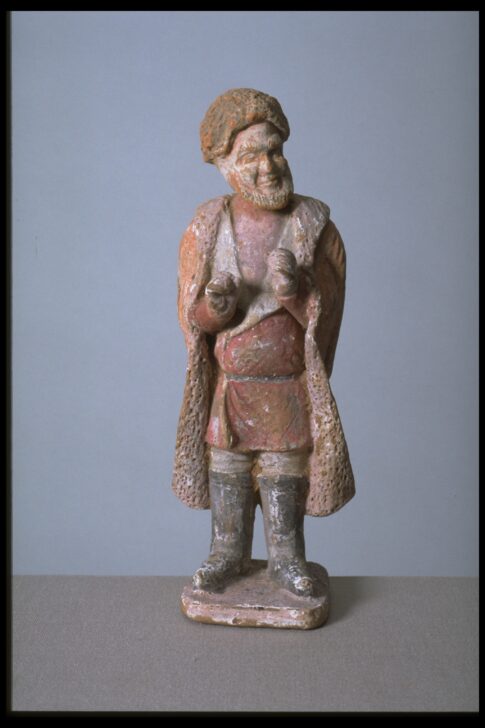Sogdian groom, from a set of funerary sculptures
Chinese

Description
March 28, 2009
The global reach of the Tang Empire and the commercial success of its Silk Road enterprise by land and by sea attracted many foreign adventurers, entertainers, and workers to China. The Chinese were fascinated by their exotic looks and ethnic garments and featured them prominently in the painting and pottery of the period. This Sogdian groom likely came out of the tomb of a Chinese military official, along with a retinue of other figures for a comfortable afterlife. The pottery groom, made of low-fired earthenware and decorated with white slip (liquid clay) and pigments, demonstrates the Tang interest in realism. He is carefully depicted with red hair, bushy eyebrows, deep-set eyes, large nose, well-trimmed beard, and wide-lapelled robe, which is tied with a black belt below the waist under a fleece overcoat. He wears white leggings with soft knee- high black boots.
Subject Matter:
It was common for Chinese military officials to adorn their tombs with sculpted figures of both imported horses and their red-haired, bearded Sogdian grooms. The Sogdians (a people of ancient Central Asian kingdoms in the region of modern Uzbekistan) were important in the commerce of the Silk Road between the fourth and ninth centuries.
Physical Description:
Standing male figure with bushy beard wearing a robe and black boots, decorated with red and black pigment.
Usage Rights:
If you are interested in using an image for a publication, please visit https://umma.umich.edu/request-image/ for more information and to fill out the online Image Rights and Reproductions Request Form.